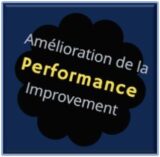
About Me
Introduction
The classification of prisoners has emerged as a pertinent factor that contributes to the effective functioning of correction facilities globally. The objective of this report is to provide a comprehensive exploration of emerging trends in prison classification to promote inmate rehabilitation, enhanced security, and reduced recidivism.
Discussion
Prison classification refers to the process of assessing incarcerated persons based on route towards punishments, their needs or risks during imprisonment. Traditionally, prison classification has been conducted based on subjective factors like the severity of the crime or the length of the sentence. However, the current prison classification system has observed notable advancements, where it is now mainly influenced by objective factors such as medical needs, mental health, and substance abuse history to ensure the prisoners' safety and prison staff.
Emergence of Objective Jail Classification (OJC)
The adoption of the Objective Jail Classification (OJC) system has marked notable progress in prison classification. This system necessitates the collection and utilization of objective data to inform inmate classification. The OJC uses scientifically developed instruments to evaluate inmates based on risk and needs assessment. Security risks, escape tendencies, and medical and psychological needs feature prominently in these instruments. The OJC, therefore, allows for the informed placement of prisoners to enhance safety, encourage behavioral improvement, and provide a systematic approach to addressing inmates' needs. For example, prisoners with severe mental illness could be housed in units that offer comprehensive mental health services.
Risk-Need-Responsivity (RNR) Model
Furthermore, the Risk-Need-Responsivity (RNR) model has increasingly been utilized in prison classification to promote more effective correctional programming. This model suggests that the level of service should be matched to the offender's risk level to reoffend (risk), the offender's criminogenic needs should be targeted in treatment (need), and the offender's ability to learn from a rehabilitative intervention should be considered to guide the approach to the treatment(responsivity). Compelling evidence supports this model's effectiveness in guiding prison classification to reduce recidivism.
Use of artificial intelligence (AI) in prison classification
Artificial Intelligence (AI) provides a modern approach to prison classification. AI can analyze large datasets, consider numerous variables, identify patterns, and predict future behavior more accurately than humans which serves to improve classification decisions. It allows authorities to match inmates with appropriate interventions, anticipate problematic behavior, and reduce the probability of reoffense after release.
Conclusion
The new trends in prison classification, as explored through this report, involve the use of objective data, specialized treatment models like RNR and the application of AI technology to predict inmate behavior. These recent advancements have shown efficacy in promoting rehabilitation, safety, and reducing recidivism rates, thereby promising a more effective correctional system. However, further research is necessary to optimize these classification strategies and overcome any arising legal, ethical, or practical challenges, given the inherent complexity and individuality of inmates’ experiences and needs.
In closing, these new approaches to prison classification should be adopted and further developed wideworld to transform prisons into facilitative institutions aimed at the inmates' reintegration into society. On the whole, the ultimate ambition is to foster safer societies by reducing crime rates and eliminating recidivism.
Location
Occupation

